For the past four years, I have written an annual post on the work around Euston to create the extension to the station for HS2, recording the area from before work started to at some point in the future, when the new station will be operational.
I then went back in 2019 as demolition started.
One year on, and in 2021, the majority of the buildings in the surrounding streets have now been demolished, and work has extended to the west of Hampstead Road, along with the grounds between Euston Station and Euston Road. Walking the area now provides an indication of just how large an area is being developed for HS2’s London terminus at Euston station.
So for 2021’s update, in today’s post are some of the photos from a walk through the area that will become Euston’s new HS2 station, following the route shown in the following map (Map © OpenStreetMap contributors).
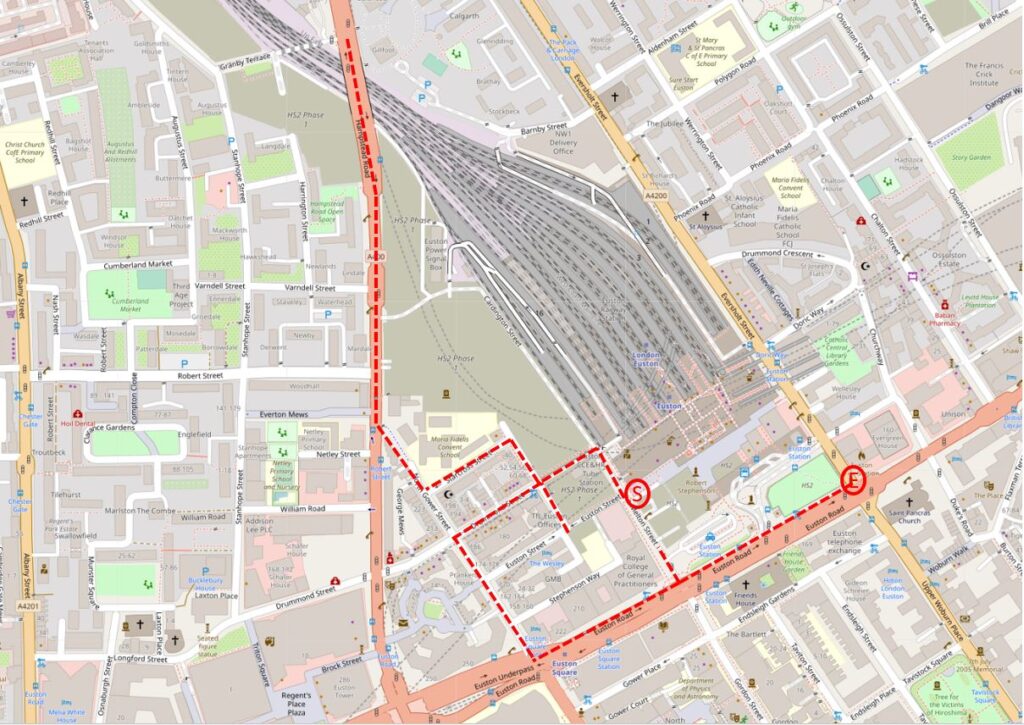
This is the view looking west from point S in the above map, at the south western corner of the station.
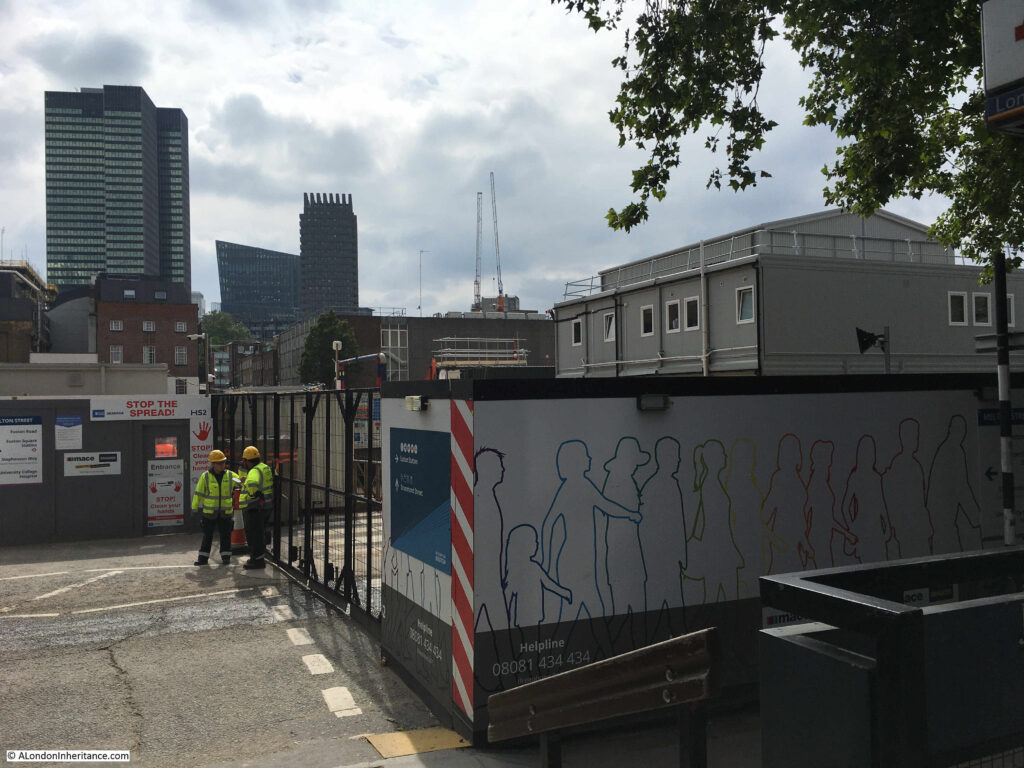
The road in the foreground is what was Melton Street, which now provides one of the access routes into the works.
From this point, there are a couple of pedestrian walkways that have been created through the site:
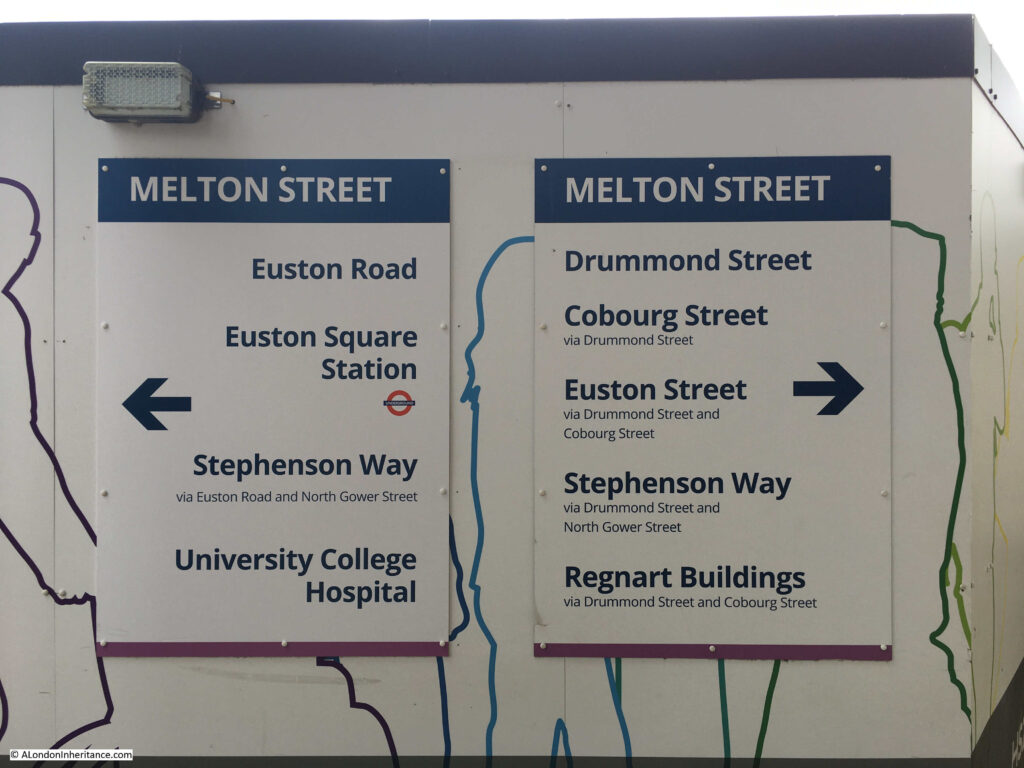
I turned right to head towards Drummond Street. The following photo is looking along the closed Melton Street. The old Euston Underground station of Leslie Green’s distinctive design is the one remaining building on the corner of Melton Street and Drummond Street.

View across Melton Street to the left of the above photo:

Here is the turning which takes you across Melton Street to Drummond Street:
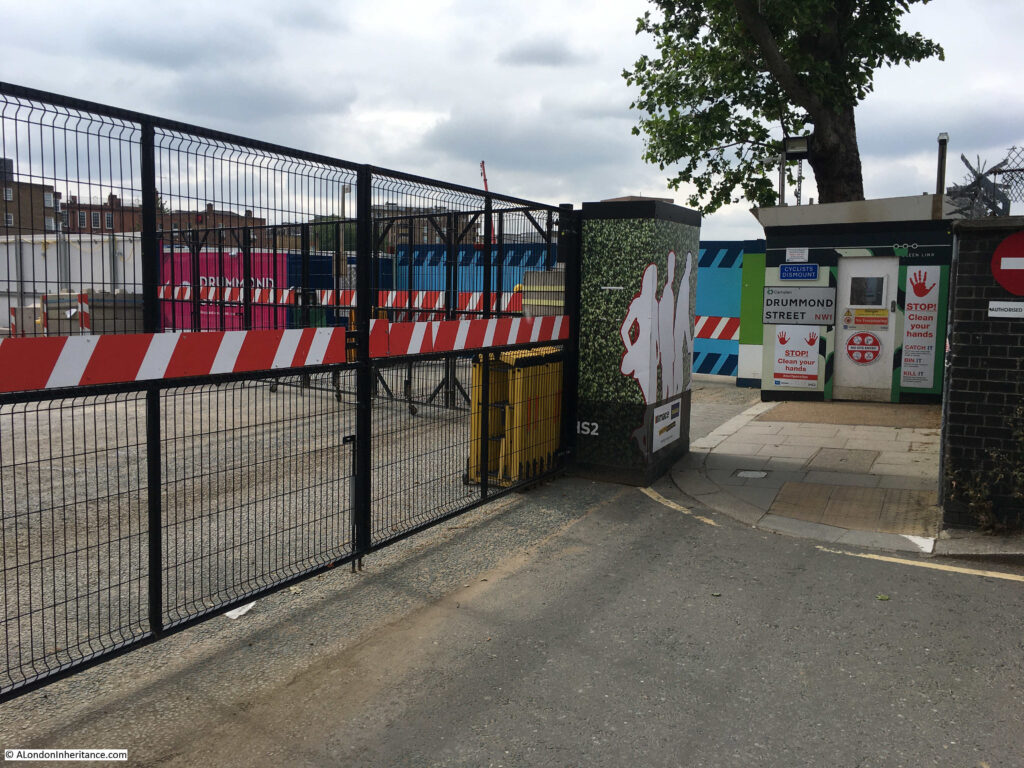
The old underground station:
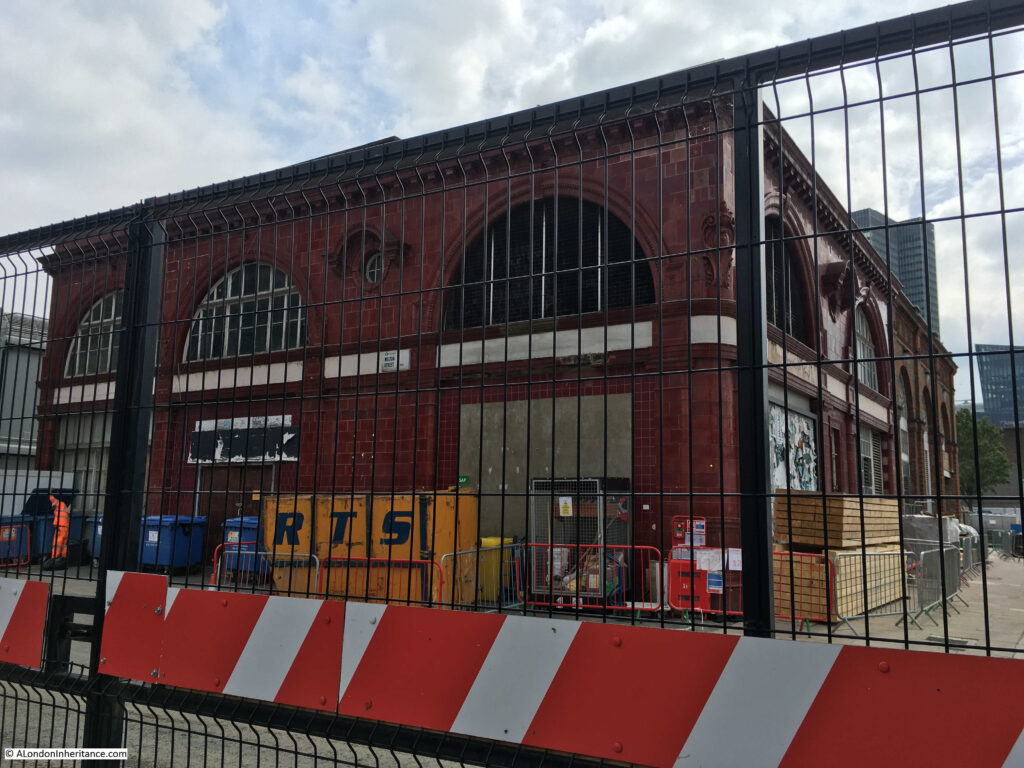
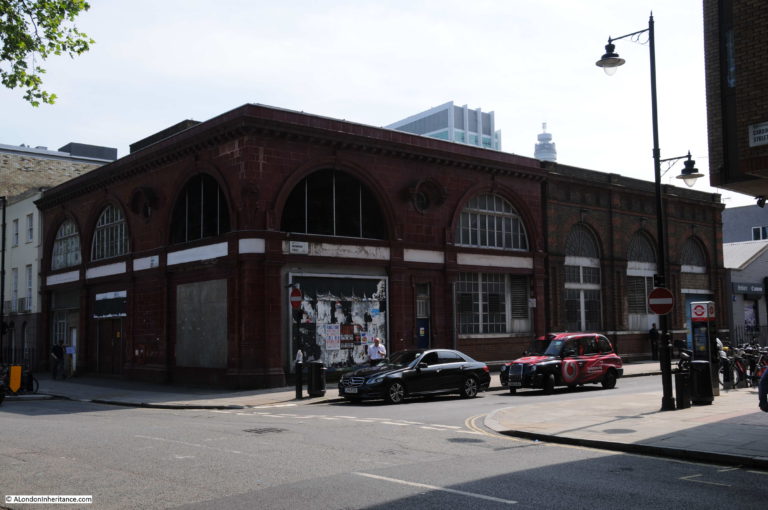
Into Cobourg Street and the Exmouth Arms is still open, on the edge of the construction site.
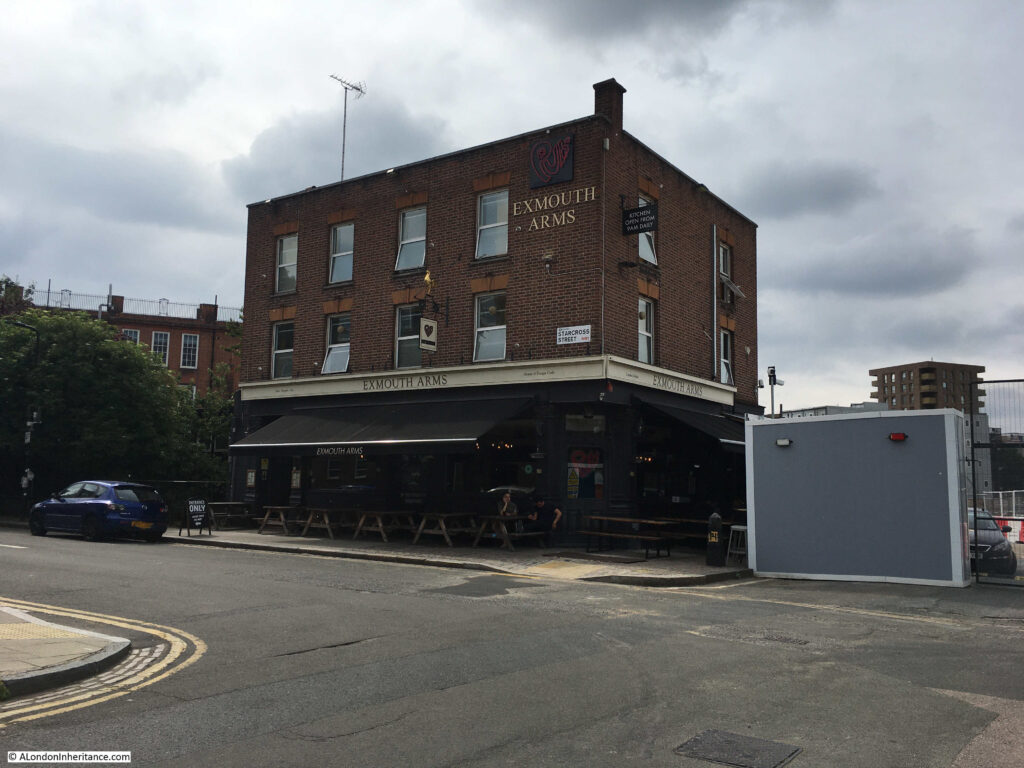
Another access gate at the end of Cobourg Street:
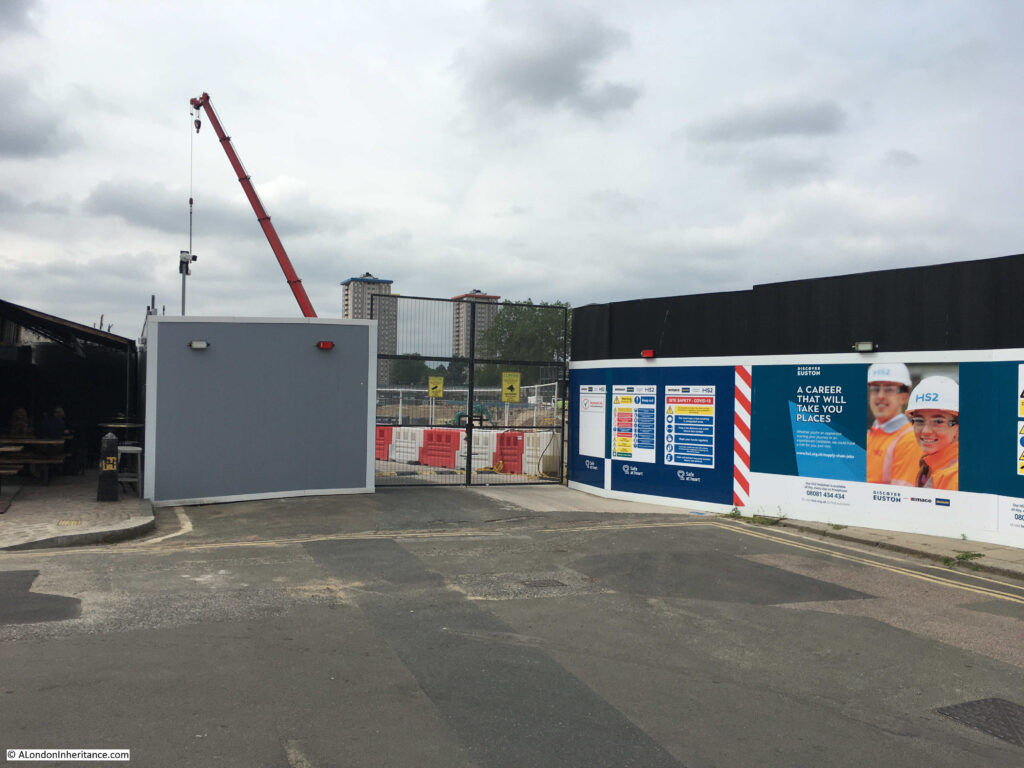
From where we can look out over what was St James Gardens, which is now a large hole:
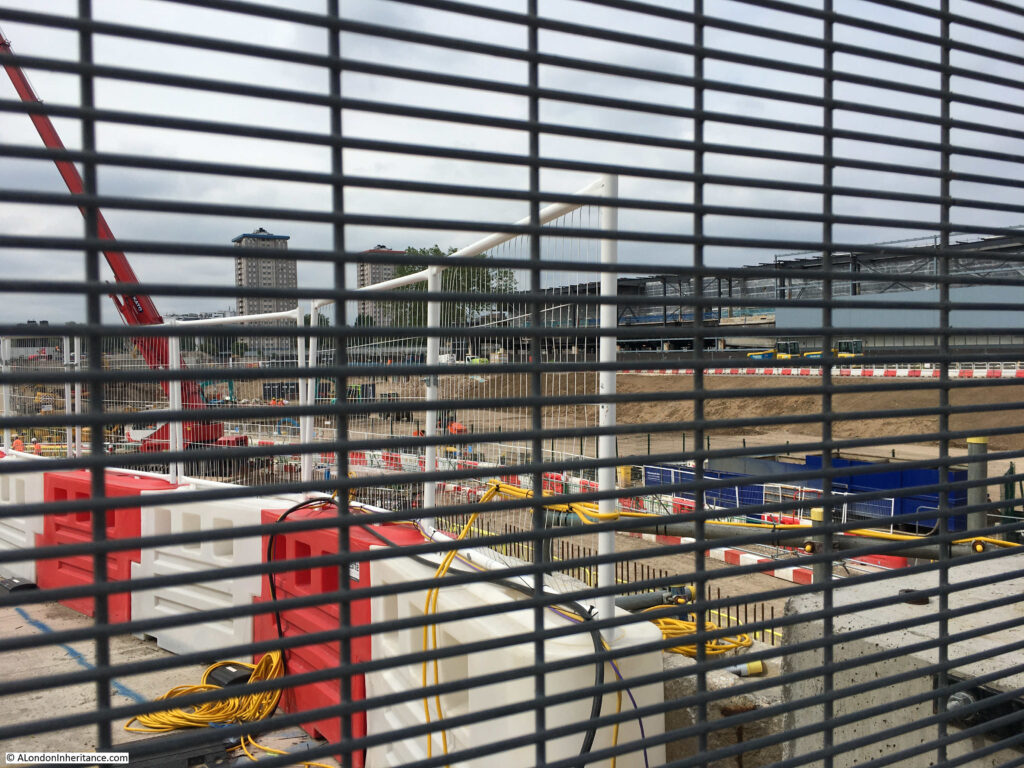
View back along Cobourg Street showing on the left the large and continuous hoardings that have been erected along the edge of the construction site:
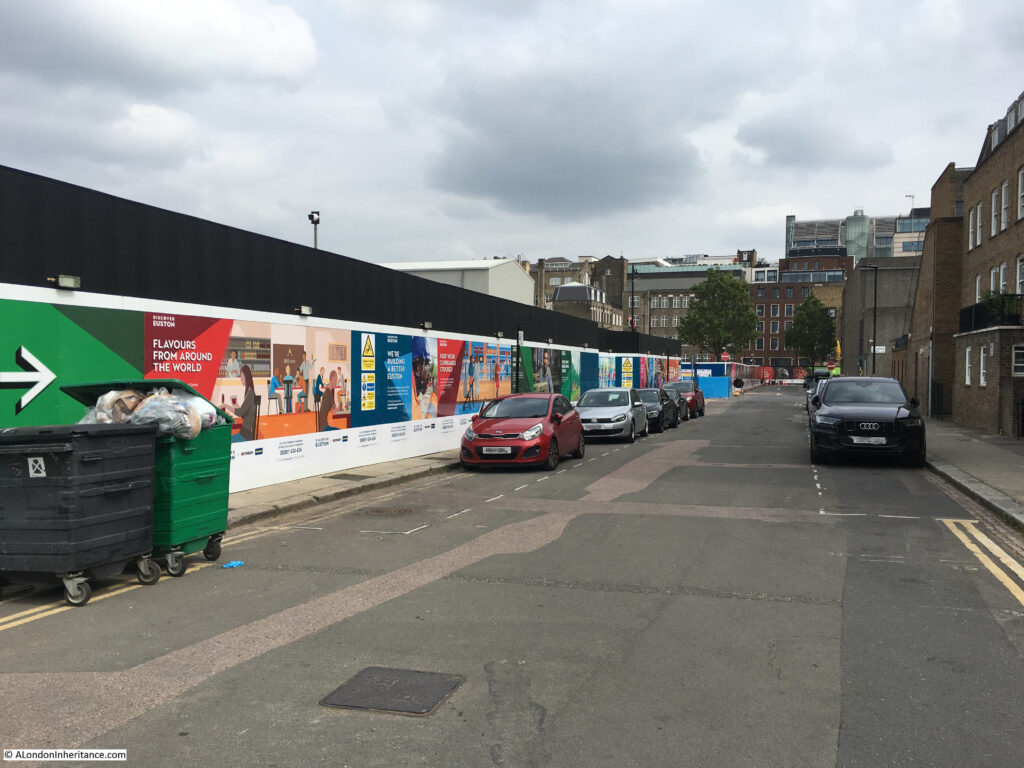
I cut through to the Hampstead Road and started walking north. This is the junction of Cardington Street with Hampstead Road:

Walking further north along Hampstead Road and the area to the left of the street, south of the rail lines out of Euston are now another major construction site:

Work had not started here back in February 2020, and now demonstrates how large an area is being covered by the work to create the new Euston Station and HS2. The entrance to the new work area:

Obligatory camera over the wall shot to see the existing tracks running into Euston:
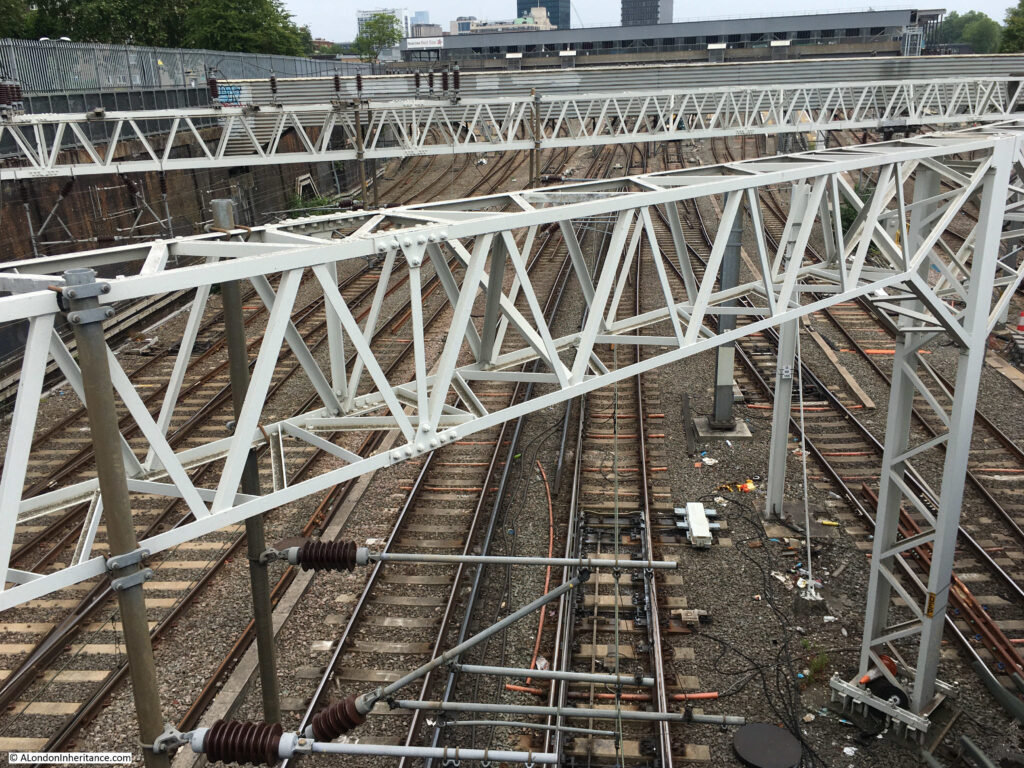
Walking back south along Hampstead Road, and it is not just the geographic size of the construction work, but the related infrastructure, with a number of large, temporary buildings constructed for those working on the site:
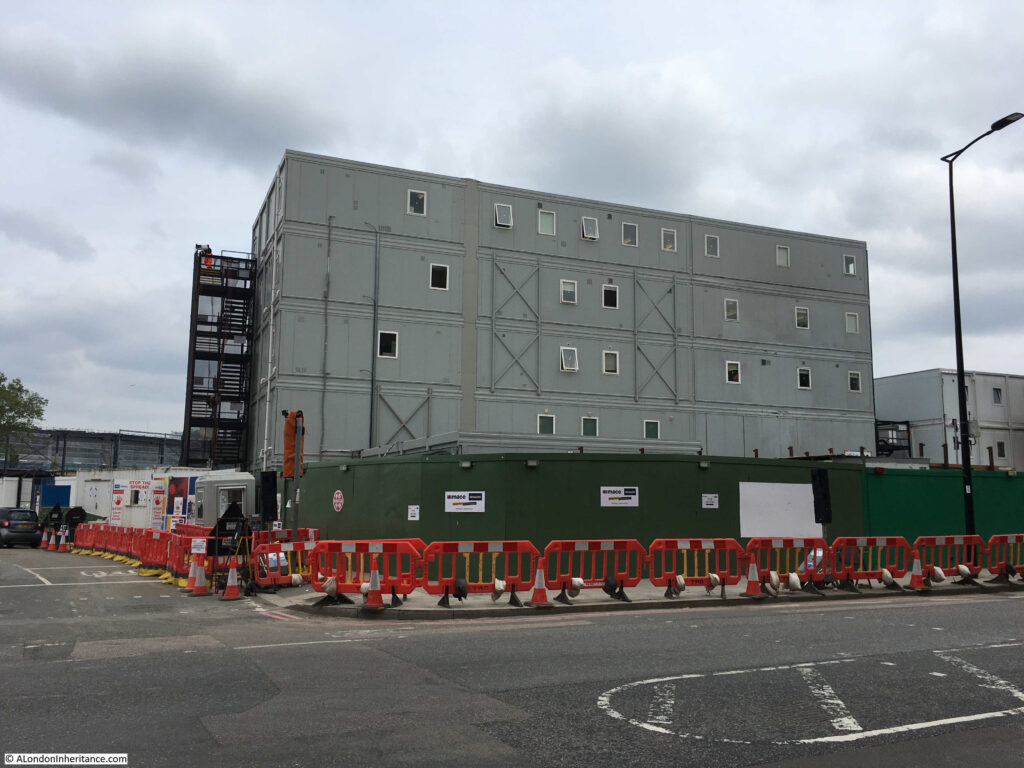
Back into Drummond Street and this is looking from the part of the street that has not been touched, through to the demolished section which now forms the pedestrian walking route to Euston station:
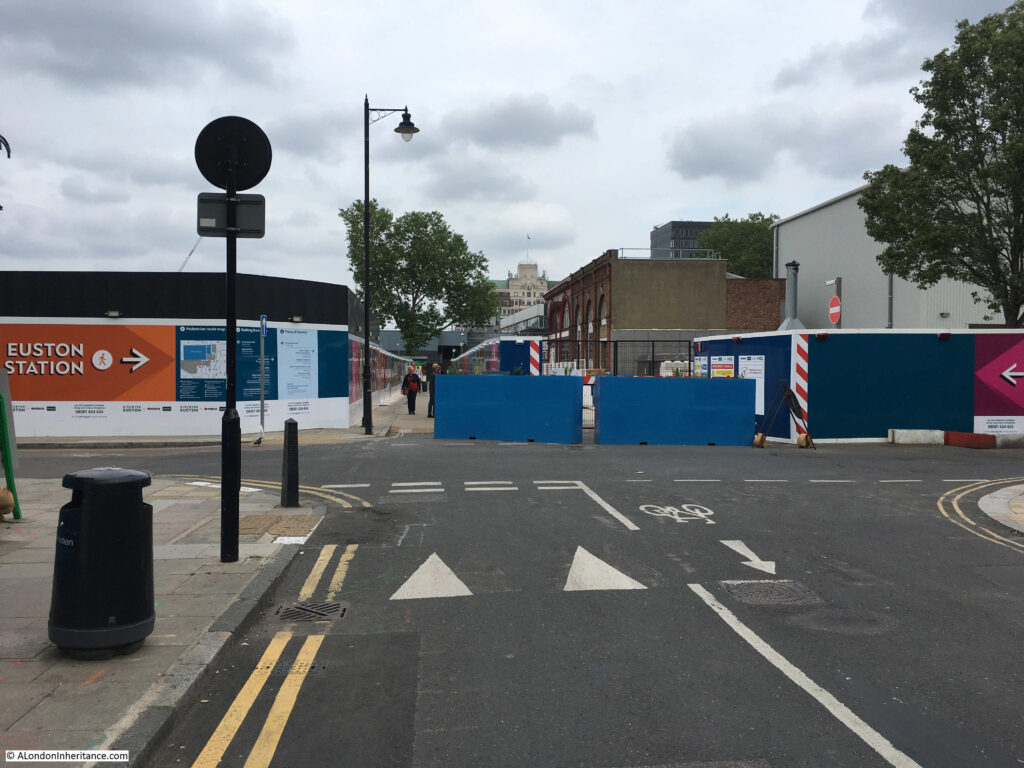
Although the western section of many of the surrounding streets are not being demolished, there are several works taking place along their length:
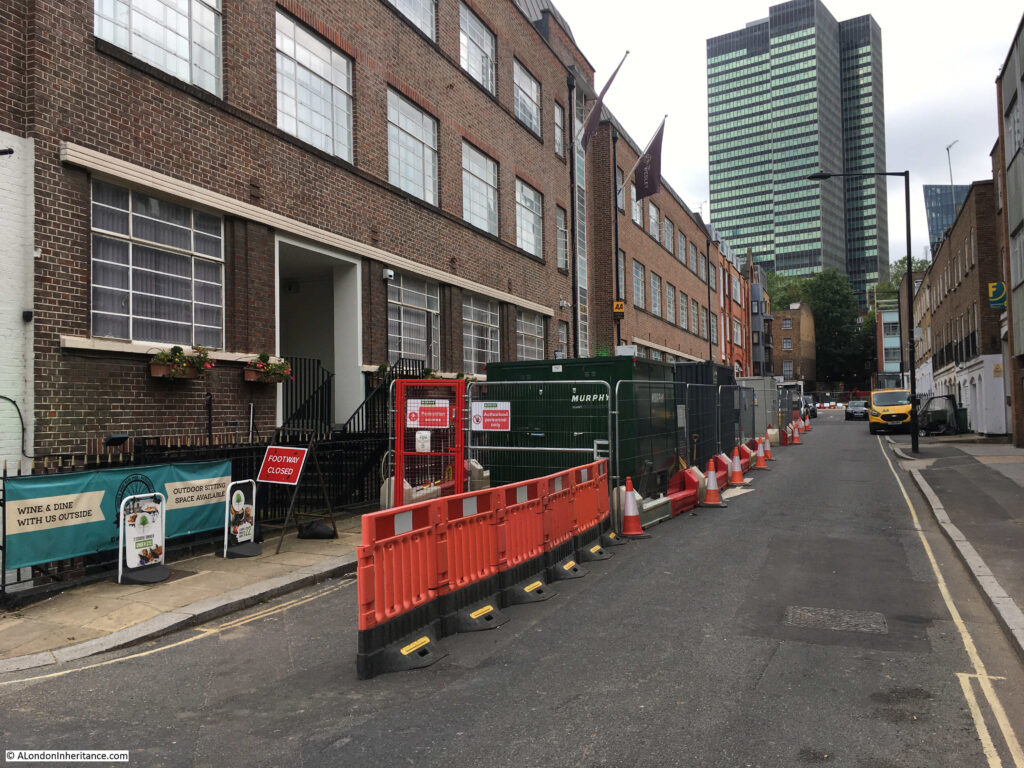
The following photo is from the junction of Euiston Street (which once went straght on) and Cobourg Street on the left:
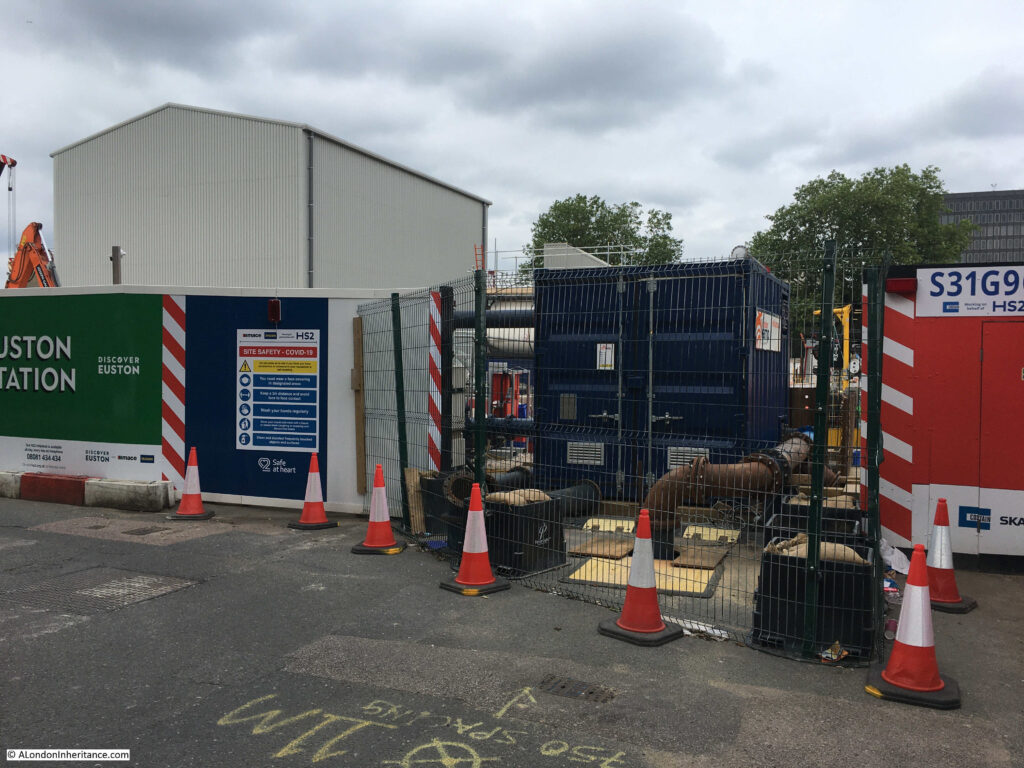
The above photo was the location of the Bree Louise pub, here photographed just after the pub closed in 2018:
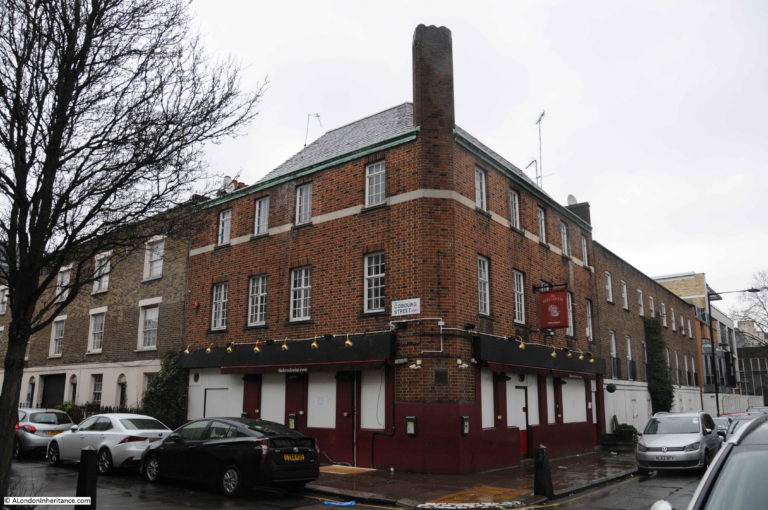
With hoardings in place in 2019:

Work blocking off Regnart Buildings:
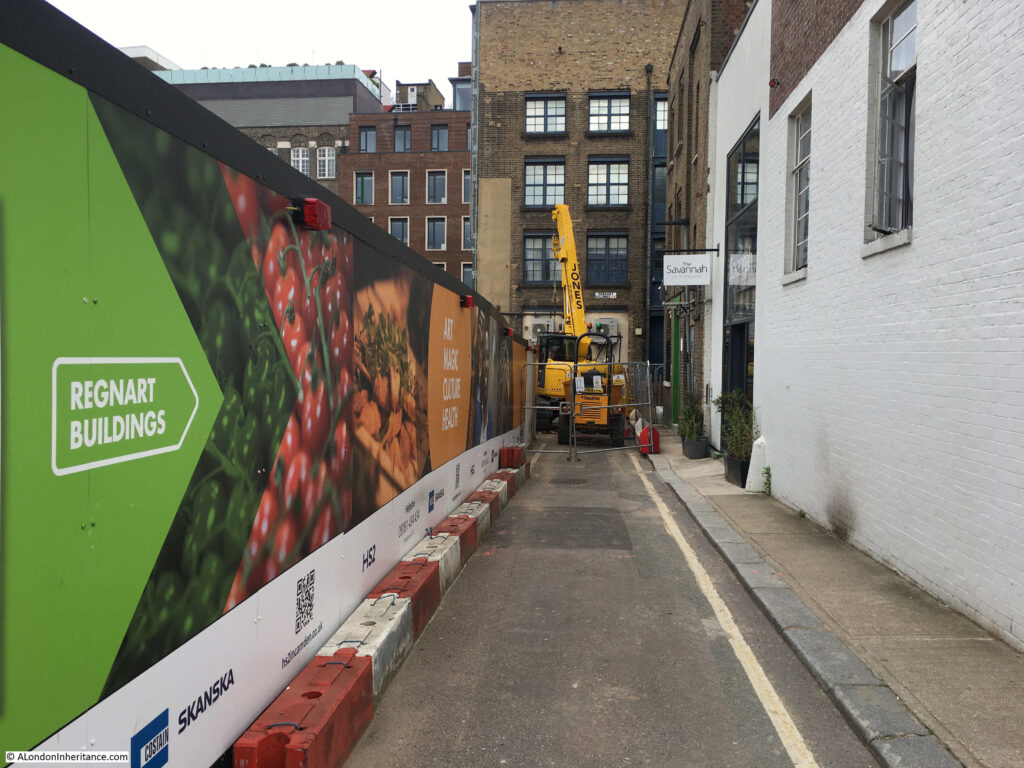
View along Cobourg Street from the end of Euston Street:

The whole construction site is very secure, with very few points to look in and see the work underway. Tall hoardings with information about local businesses and institutes, what there is to find in the area, the history of Euston station, the future HS2 etc. line the entire site, with well protected work access points the only means of access:
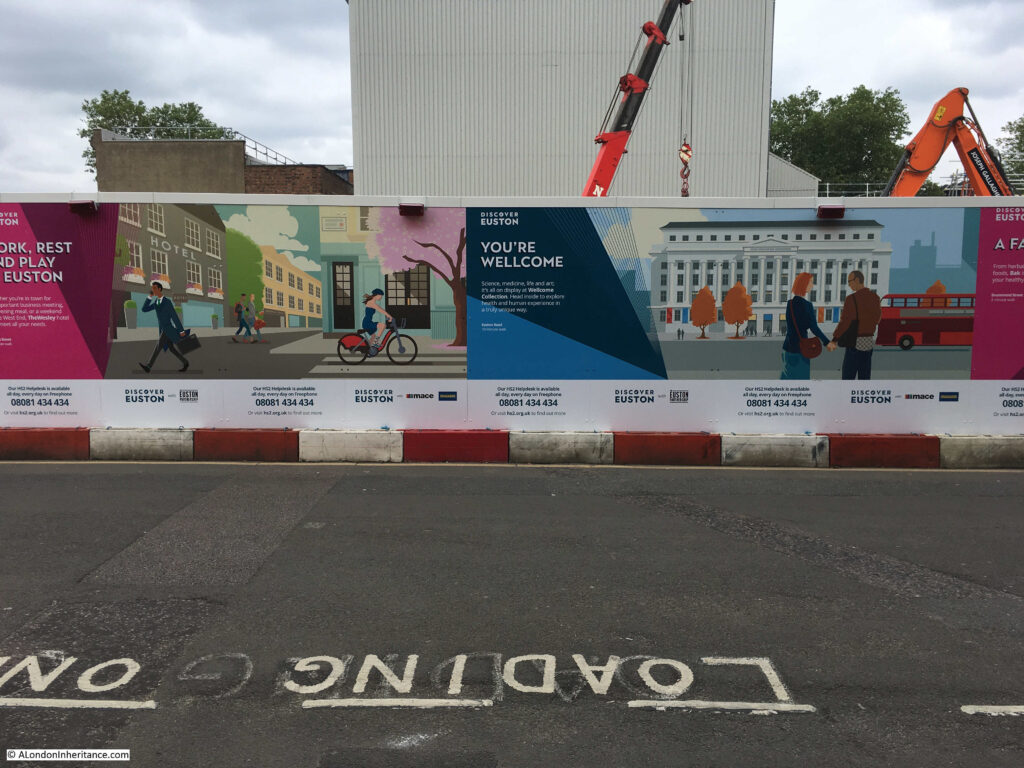
Work access point at the entrance to what was the eastern section of Drummond Street:

Walking back to Euston Road, and this is the Melton Street access point:
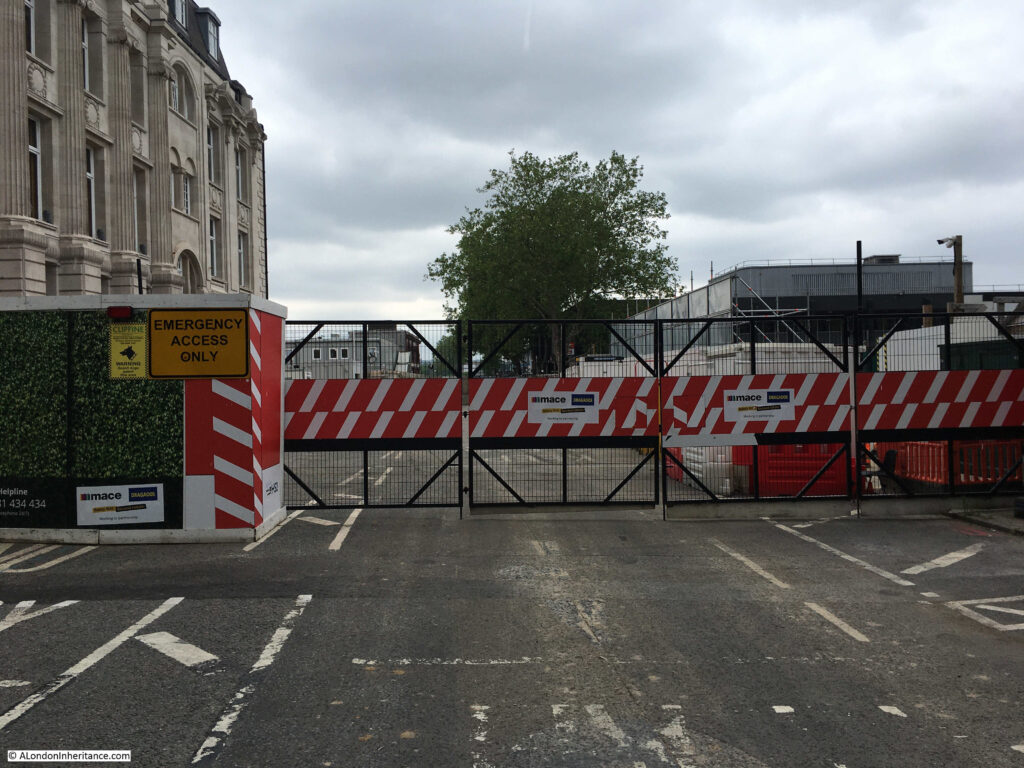
There is now only a short length of Melton Street in use, providing access for taxis and drop offs at the station to the immediate right. The traffic lights providing access to Euston Road only seem to change to green for a couple of vehicles, resulting in a number of rather irate drivers.
Further along Euston Road, and this view is looking across the bus access road to the station, to what was green space in front of the station:

This green space is where demonstrators occupied the trees and dug tunnels a few months ago. Fencing around the site now seems to resemble some form of high secure establishment rather than a constructiion site.
Two layers of fencing, with an outer green mesh metal fence, and inner hoardings:

Indeed the whole Euston Station and HS2 construction site is the most secure of this type of construction site that I have seen. As well as the metal fencing and continuous hoardings through the site, there are plenty of orange high-vis security staff guarding entrances and walking the boundaries.
North east corner of the green space in front of the station. Closed Euston Square leading up to Euston Road on the left resulting in buses coming out of the station having to divert around Grafton Place adding to the congestion in the area:
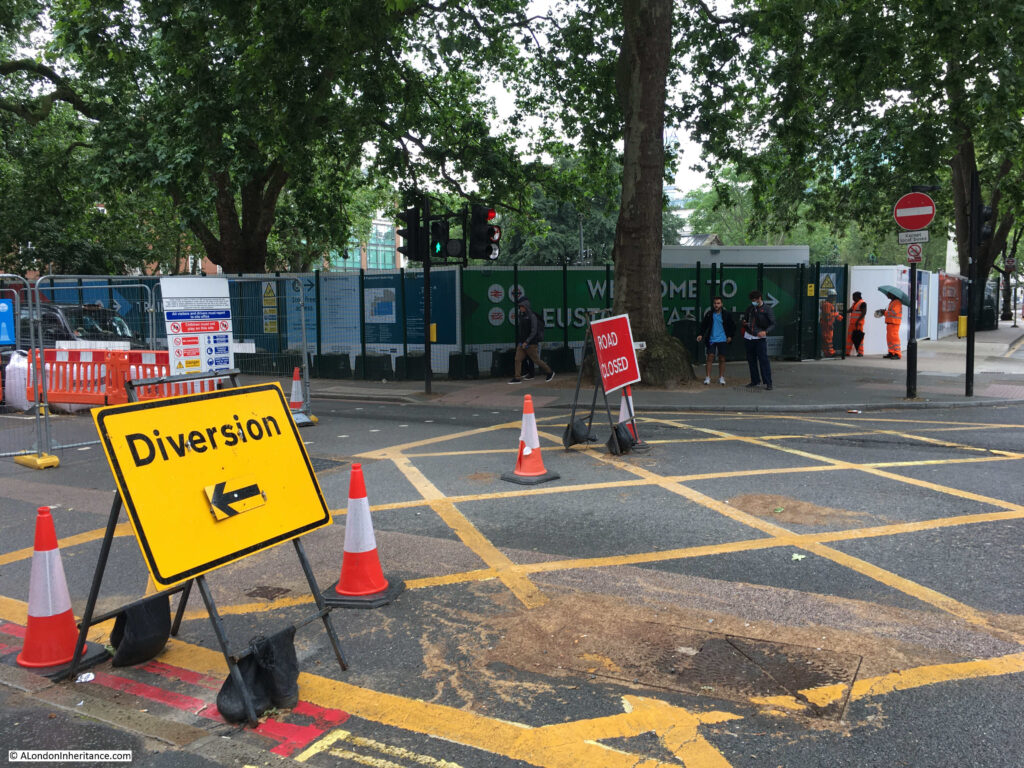
The corner of Euston Square and Euston Road:

From the walkways and streets available to the public, there is really not much to see. The construction phase has reached what appears to be the end of demolition, there are plenty of big holes in the ground and temporary structures, but nothing yet of the new station.
According to the HS2 web site, “Phase One will open between 2029 and 2033”, so a minimum of eight more annual posts walking around Euston Station and HS2, more probably around twelve. By 2033 this area will look very different.

Thank you for the update. I am so pleased I had the building (now Royal College of General Practitioners) Grade 2* listed when I worked there as a facilities manager in the 90s otherwise that too would have been lost. It was built by Arthur Beresford Pite in 1906.
The area is protected like a nuclear plant! The workers are rude and hostile. So secretive. One can only hope that the end will be worthwhile as its costing a fortune!
Rudeness and hostility to the general public from the workers is unacceptable. HS2 has a complaints procedure and you should send them details of such incidents, so that management can take action.
Not an area I know save the Euston Rd/obvious links between landmarks. A shame really but much the same happened in the 60s when the current Euston was built. It is indeed the work sites and access points etc that make these development even more impactful, with Crossrail being the obvious example
Thank you for all the info I worked for the NUR opposite Euiston Square station in the 50s it moved around the corner later so different even now
I just went back and read the annual posts from the beginning. I feel very conflicted as I approved of train travel but feel HS2 was badly designed, is using technology that by the time it is completed will be out of date and so much heritage and nature has been destroyed and so much carbon released that will never be nothing but an eye-wateringly expensive white elephant. In the mid-80s I lived in South End Green and daily took the 24 bus down Hampstead Road to Victoria. In those days, I was waiting for a developer to buy the London Temperance Hospital – a building I was rather fond of – and convert it into apartments. What a modest dream that now seems in comparison. There is no doubt that your annual blogs on this are a hugely valuable record – thank you.
I agree with Alison Homewoods sentiments exactly. Whatever benefits are to be had from HS2 are totally outweighed by the amount of wanton destruction of our London. It is happening all over London not least by the carnage in and around old St Giles/Tottenham Court Road, to say nothing of the tragedy of what’s been happening in the City of London since WW2.
Keep up the great and interesting work, but I have to say I am deeply saddened by this post.
I assume that the tall charcoal-coloured building that features in your first and fifteenth photographs is Euston Tower ?
The “Bree Louise” is a sad loss.
Allowing for the inevitable construction delays, finance issues and even a possible change of government, you can probably look forward to getting another fifteen annual posts out of this subject-matter. However, it is not inconceivable that construction work at Euston might be completed before then, but phase one’s opening delayed by issues elsewhere.
All this as I understand it, to among other things shorten the train journey between London and Birmingham by, if my source it correct, 32 minutes. Assuming the trains are reliable and run on time. It’s seems like an awful lot of money and environmental damage for a seemingly very small ROI.
Cui bono?
Oh, it’s a very large ROI. A large negative ROI for the taxpayer and those whose properties are affected without compensation, and a large positive one for contractors and politicians. Looking at HS2 from across the Atlantic it has much in common with various states’ high-speed rail projects in the U.S. (California’s is particularly horrendous.) If demand exists for faster or more frequent travel from London to Birmingham, why can’t buses provide it? Such a solution is flexible, cheap and privately-funded.
It’s also amenable to changing demand for travel along a specific route and is responsive over time to shifts in demand for travel to other areas on a road network that already exists.
I’m fond of the Old Oak Common area and its history, as I commuted regularly through there out of Paddington between my home in London and office in Reading on the old GWR line in the ’90s. HS2 is destroying a small community abutting the western edge of OOC, as well as ripping up a large swath of Acton to the west.
What most of these rail projects have in common, and what flexible road transport lacks, is a great deal of opportunity for graft and corruption among politicians and those who fund them. I see the point of Crossrail completely, given the constraints on the road network in Metro London. The logic of HS2, beyond my inferences above, eludes me.
To our host: thanks again for these Euston posts. When visiting London during the past several years on business and leisure I’ve occasionally walked from Camden or Mornington Crescent along Hampstead Road by Euston and have explored the area. I recall the Ibis Hotel, the disused Leslie Green Underground station, and St James Gardens. It’s interesting, and disheartening (given the ultimate end of the HS2 project) to see the area so transformed. I hope I’m wrong about the outsize costs to all.
The ‘Bree Louise’ Public House was named in-memory the Landlord’s daughter who died at a tragically young age.
The pub attracted people from far and wide and was a thriving concern, its loss was sorely felt by many hundreds. It now appears that it isn’t to be demolished. Was there really a need for the compulsory purchase?
I increasingly wonder if HS2 is a project that’s being plated with rather too much gold.
I too frequented the Bree Louise and knew it’s history as I worked at 30 Euston Sq. It’s a very, very sad loss.
https://en.wikipedia.org/wiki/Euston_Arch
Plans to rebuild Euston Station, as the gateway to the HS2 line, might have included reconstruction of the Euston Arch (demolished in 1962). But given that at least 60% of it was buried in the Prescott Trench of the River Lea in the East End of London, that might have proved somewhat difficult!
In 1994, historian Dan Cruickshank; tracked down the majority of the arch’s stonework. Some had been used by the demolition contractor to construct a large rockery in his back garden, whilst 60% had been bought by British Waterways and used to fill a scour hole in the bed of the Prescott Channel (River Lea in East London). Aside from a thin covering of river sediment and some ubiquitous ‘rubbish’, the stones are not buried; are in god condition and can be accessed. A total of thirty stone pieces have since been salvaged and are in now in the care of the ‘Euston Arch Trust’. The trust are campaigning for the arch to be reconstructed, as a suitable edifice for the new HS2/Euston Station.
It is time to erase this ‘short sighted’ demolition and restore this great piece of railways heritage
I found Drummond Street was one of the locations where my 2x great grandparents lived. It was therefore part of my history and heritage. It was a delight to see that the original buildings were intact and seemingly secure. All now trashed! If it was for a significant benefit I could just about accept it. But it’s not. The main aim seems to be to be able to travel between London and Manchester in less time than it takes now – two hours. Why? The main effect will be to create commuter towns further from London. Those passenger numbers will then be counted as proof that HS2 was needed. There is no doubt before Covid that extra capacity was needed but it could have been done so much cheaper and with better environmental impacts. I still have the snaps I took of Drummond Street – at least I got there in time.
The Bree Louise pub used to be called The Jolly Gardeners 1960s/70s..